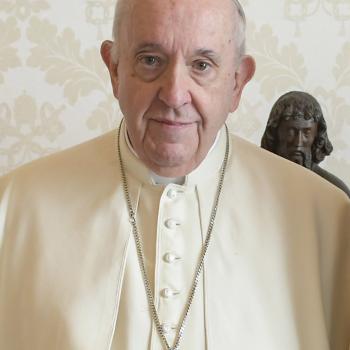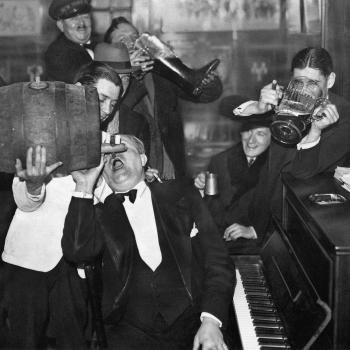Sometime in late 1946, one of the most famous women in America considered having an abortion. Forty years old that year, Anne Morrow Lindbergh was pregnant for the seventh time, just a year after she gave birth to a second daughter, Reeve, and told herself, “You will never have to do this again.” Anne recalled the aftermath of Reeve’s birth as “climbing up that long hill… feeling exhausted, ill, depressed all winter…” So to learn that she was pregnant again felt “terribly wrong—a mistake and wrong and not meant to be. I rebelled against it with every fiber of my being, physically, mentally, emotionally. I was frightened of it—terrified—both physically and mentally.”
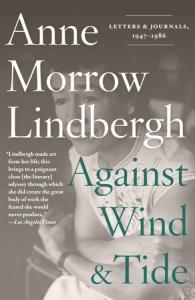
Anne’s unsympathetic obstetrician told her that she should “go ahead and have the child. ‘Give it away if you don’t want it!’ (As if that were the point.) When I asked him about danger, he said that there was no danger, that there was more danger in an abortion. When I said I was afraid, he said, ‘What are you afraid of? You’ve been through much harder things than this.’” So she got a second opinion from Dana Atchley, a New York-based physician whose patients included Greta Garbo and Katharine Hepburn. “You have told me enough,” Atchley said to her, “to convince me that an abortion is completely justified.”
In New York, Anne discovered, exceptions to the state law against abortion could be made in case of “permanent physical or mental disability.” Something like 800 pregnancies were legally aborted in New York City in 1946 because of this “therapeutic exception,” about five for every thousand live births. But as strongly as she rebelled against the idea of another pregnancy, Anne Lindbergh also rebelled against the idea of ending it. For all her fears, she
felt, perhaps equally strongly (and this grew as time went on), that I could not take it into my hands to interrupt the act already done….Could I say no to a child, to that act of God which had been the greatest experience in my life, from which I had learned the most? That experience—almost the only one—which I felt in other terms and had to put into writing the lesson life had taught me. “The word made flesh” [John 1:14].
Anne told Atchley that she could only justify an abortion in the event of physical danger. When he later suggested that it would be safest for her to terminate the pregnancy before having gall bladder surgery, she found her “legal out. Even a moral one.” But in the end, she rethought the second half of that judgment, and opted to have her gall bladder removed and still carry the baby to term.
Just two days after making up her mind, she miscarried.
“After the first shock,” she admitted, “I was incredibly relieved. That is too mild a word. I took it as a pure act of mercy from God. An act of mercy to be accepted without a shred of guilt but with a heart full of humility and gratitude. A sign from heaven, a rainbow, a promise of presence.”
I thought of this complicated episode — reduced to a mere paragraph in my forthcoming biography of Anne Lindbergh’s vexing husband — as I read our colleague Daniel Williams’ new book, The Politics of the Cross: A Christian Alternative to Partisanship. Rooted in biblical reflection and historical understanding, its political theology bursts conventional boundaries of our polarized democracy. The chapter on abortion is a particularly important demonstration of Dan’s central argument:
that Christians can be biblically and consistently pro-life, pro-family, and anti-racist not by supporting the candidates whom conservative white evangelicals have usually supported but by pursuing policy goals that result in the greatest amount of love shown to the most vulnerable people in our society—especially the poor, the very people whom Jesus said would possess the kingdom of God (Luke 6:20).
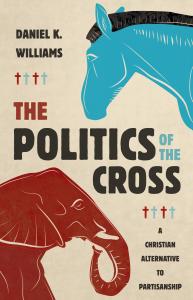 Like Anne Morrow Lindbergh — but with less equivocation — Dan objects to the practice of abortion on moral and theological grounds. While he does appeal to scientific research alongside biblical and historical sources, Dan concludes that the “value or status [of a fetus] as a person does not depend” on its physiology, but its status as “a divine image bearer… from being created by God and known by God.”
Like Anne Morrow Lindbergh — but with less equivocation — Dan objects to the practice of abortion on moral and theological grounds. While he does appeal to scientific research alongside biblical and historical sources, Dan concludes that the “value or status [of a fetus] as a person does not depend” on its physiology, but its status as “a divine image bearer… from being created by God and known by God.”
That’s not a value that Anne’s husband recognized. At multiple points in writing about him, I realized that Charles’ failure even to consider the doctrine of the Imago Dei left him free to devalue certain kinds of human life. “Having made God in his own image,” I write in my book’s afterword, “Charles Lindbergh saw no image of God in people who didn’t resemble him” — whether they happened to be Black or Jewish, or those who didn’t meet his physical and intellectual standards for “the best” of his nation, race, or species. A year before his wife contemplated abortion, Charles Lindbergh expressed his hope that the Truman Administration would “encourage the reproduction of the best Americans.” For if “our policies encourage the reproduction of our less able groups,” he told a friend (and his journal), “nothing we do can save our race and civilization.”
Though writing about my subject’s eugenics-shaped view of human life has only strengthened my own commitment to the Imago Dei, I also share Dan’s doubt that a pro-life strategy focused on the Supreme Court will significantly reduce the number of abortions. He expects nothing from the Roberts court other than “incremental chiseling away of the parameters of Roe” v. Wade, and even an unlikely reversal of that landmark decision “will not mean the end of legal abortion in the United States,” since there would be no “new cultural consensus in favor of the unborn, because it would be seen as a power play rather than as an act of justice.” Having already “largely returned to a pre-Roe past” — in the sense that fewer abortions are now conducted in America than at any time since 1973 — SCOTUS sending the decision back to the states would keep abortion “legally available in the states with the highest numbers of abortions, including especially New York and California, both of which offer Medicaid funding for the procedure.”
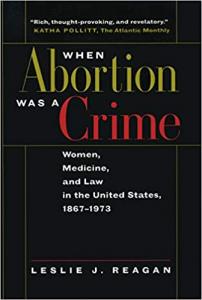 For that matter, the case of Anne Lindbergh is a reminder that abortion was hardly inaccessible in the years when it was illegal in all states, including New York. If historian Leslie Reagan is right, then pro-lifers cannot avoid the term choice. “There would be no history of illegal abortion to tell,” she begins her book on that topic, “without the continuing demand for abortion, regardless of law.” (For a recent conservative reflection on “supply and demand” in abortion, see this February 2021 post by David French.) Even if Dan is wrong about the likely legal future of abortion, the research of scholars like Reagan suggests that no law will stop women from wrestling with the complex mix of factors that causes them to opt for or against terminating their pregnancies.
For that matter, the case of Anne Lindbergh is a reminder that abortion was hardly inaccessible in the years when it was illegal in all states, including New York. If historian Leslie Reagan is right, then pro-lifers cannot avoid the term choice. “There would be no history of illegal abortion to tell,” she begins her book on that topic, “without the continuing demand for abortion, regardless of law.” (For a recent conservative reflection on “supply and demand” in abortion, see this February 2021 post by David French.) Even if Dan is wrong about the likely legal future of abortion, the research of scholars like Reagan suggests that no law will stop women from wrestling with the complex mix of factors that causes them to opt for or against terminating their pregnancies.
So the story of Anne Morrow Lindbergh reminds me of my other instinctive responses to abortion: empathy for women who agonize over it, and support for policies that make it easier for women who want to bring children into the world to choose to do so. “Legal protections for unborn children are desirable where they can be implemented and where they are supported by a broadly based cultural consensus,” Dan writes, “but a far more effective way to reduce the abortion rate and save unborn lives is to expand health-care availability and ensure that the working poor are given better wages and improved opportunities.”
Now, Anne Lindbergh sounds nothing like Dan’s description of the American women most likely to get abortions in the early 21st century: “economically disadvantaged single mothers in their twenties who do not believe they can support another child.” But the fact that she did opt against a legal abortion may illustrate some of Dan’s case. Public policy can’t guarantee most people the wealth of an Anne Lindbergh, but it can reduce poverty and increase economic security to the point that fewer women need to worry that they can’t afford to have children. Moreover, it can help ensure that all women have reliable access to health care, child care, and education, factors that Anne took for granted as she contemplated bearing and raising another child in her forties.
(Dan also stresses the importance of encouraging marriage as a means of reducing abortion. That’s a much murkier issue in the case of the Lindberghs. It’s hard to believe that being married to a frequently-absent husband helped her decide to keep their seventh child together, but all she says in her diary is that Charles found her fears “un-understandable and untenable” — not for the first time, or the last. A few years later she seriously contemplated divorce. In the end, they stayed together, with Anne never realizing that Charles went on to father seven more children with other women, starting the first affair about a decade after his wife’s last pregnancy ended in a miscarriage.)
“If Christians could have protected the unborn simply by checking a box in the voting booth,” Dan concludes, “abortion likely would have ended a long time ago.” Thinking about the story of one particular woman deciding the future of her pregnancy leaves me more sympathetic to his ultimate argument: “Addressing the deeper human needs that have contributed to abortion means doing the messy work of confronting deeply rooted societal and personal sins. In other words, it requires the very sort of self-sacrifice that followers of a crucified Savior are divinely commissioned to do.”




